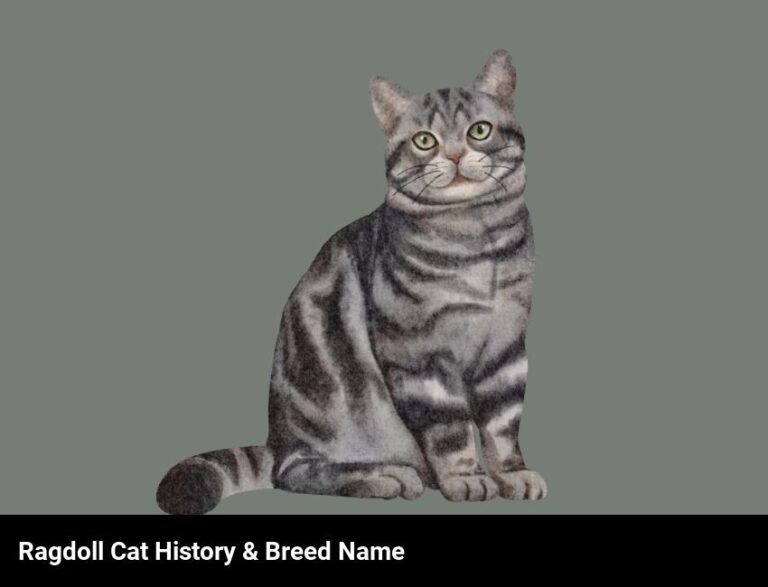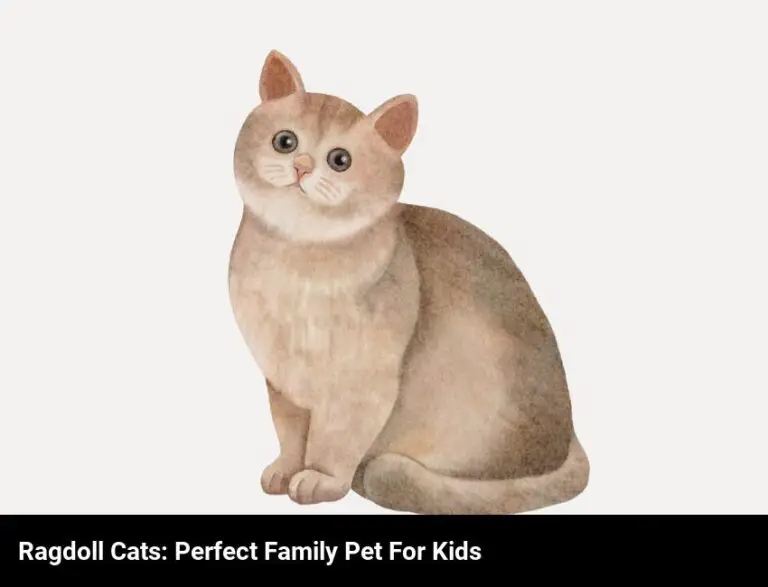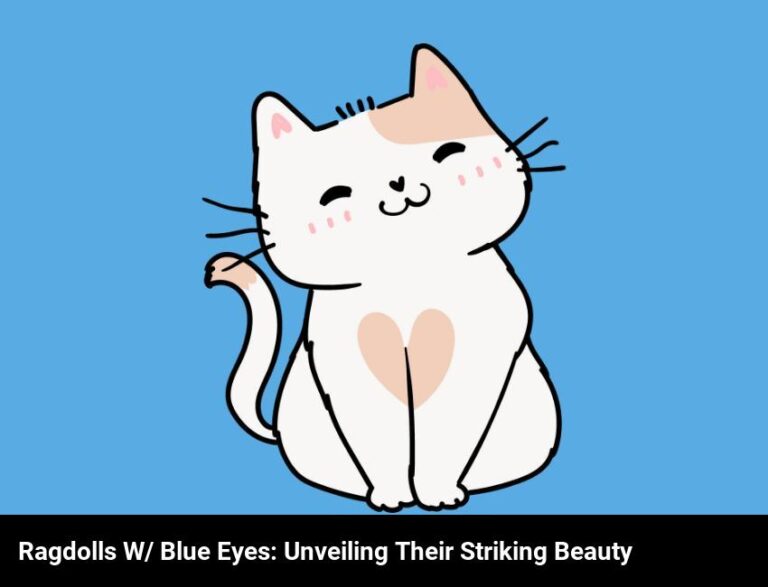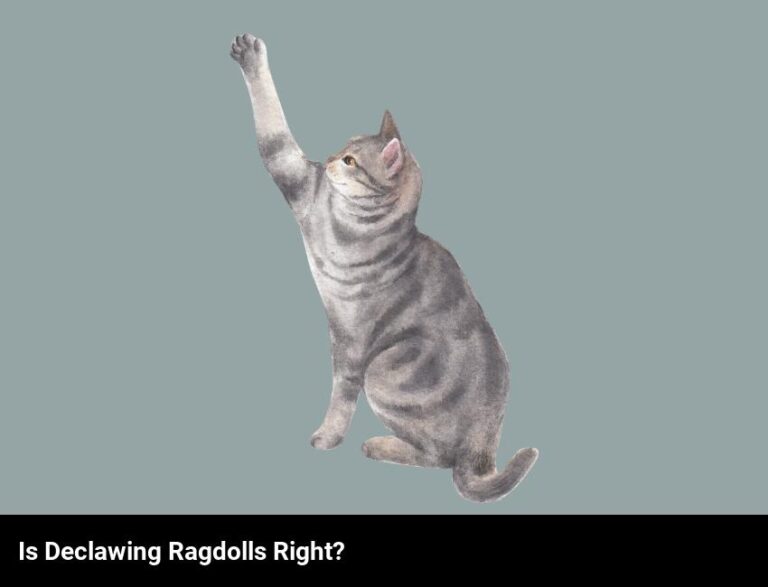Understanding Himalayan Gene Colorpoints In Ragdolls
Ragdoll cats have a unique gene colorpoint pattern, with a light body and darker points on the extremities, such as the ears, tail, and face. The gene responsible for this pattern is called the Himalayan gene, due to its association with Himalayan cats.
When I first got my Ragdoll, I was amazed by the variety of colors and patterns that they could have. But one thing I had heard of but never seen before was the Himalayan gene colorpoints that some Ragdolls have. I was curious to find out more, so I started to do my research.
What I discovered was that the Himalayan gene colorpoints in Ragdolls differ from other colors of Ragdolls in a few ways. They have distinct markings and facial features that set them apart from the rest. And the colors and patterns of their coats are affected by the Himalayan gene in a special way.
But I also wanted to know how to identify a Ragdoll with Himalayan gene colorpoints and what environment is best suited for them. And I wanted to make sure I was also aware of any potential health concerns when considering a Ragdoll with Himalayan gene colorpoints.
So, join me as I explore the fascinating world of Himalayan gene colorpoints in Ragdolls, from understanding the differences in colors and patterns, to how to identify them, to what environment they need to thrive in, and the potential health concerns that come with them.
What are himalayan gene colorpoints in ragdolls and how do they differ from other ragdoll colors?
Himalayan gene colorpoints in Ragdolls are basically the same as those in traditional Himalayan cats. They have a two-tone coat with white fur and one of the other colorpoints, such as seal, blue, chocolate, or lilac. These cats have a mask, ears, feet, and tail that are all a darker color than the white fur. They also have blue eyes.
The key difference between a Himalayan gene colorpoint Ragdoll and other Ragdolls is that Ragdolls usually have solid coats, with no markings. Himalayan gene colorpoint Ragdolls have a two-tone coat, making them stand out from other Ragdolls.
Himalayan gene colorpoint Ragdolls are also a bit more fragile than other Ragdolls. They have a higher risk of certain health problems due to the fact that they have more points in their coat. This means that they require more regular veterinarian visits to keep them healthy and happy.
Overall, Himalayan gene colorpoint Ragdolls are beautiful cats that are sure to stand out in any home. With their unique two-tone coats and blue eyes, they are sure to be a conversation piece. They may require a bit more care than other Ragdolls, but they are worth the extra effort.
What are the markings and facial features associated with himalayan gene colorpoints in ragdolls?
Himalayan gene colorpoints in Ragdolls are known for their striking coat markings and facial features. They usually have a white body, with dark ears, face, legs, and tail. The color of their eyes is usually a vivid green or blue and their nose leather is usually a dark pink or brown. They also have a distinctive white mask that covers the face and a white blaze on the nose. The markings can be seen as a series of darker points that cover the body.
In addition to their coat markings, Himalayan gene colorpoints in Ragdolls have a distinctive facial feature. They have a short, strong muzzle that’s slightly longer than their ears and a pointed chin. Ragdolls with the Himalayan gene also have a soft expression and wide eyes.
Overall, Himalayan gene colorpoints in Ragdolls are known for their unique and beautiful markings and facial features. They have a white body, dark face, legs, and tail, vivid eyes, a pink or brown nose leather, a white mask, and a white blaze on the nose. Their facial features include a short, strong muzzle, slightly longer than their ears, and a pointed chin. All these features come together to create a stunning and eye-catching look.
How can you identify a ragdoll with himalayan gene colorpoints?
Identifying a Ragdoll with Himalayan gene colorpoints is actually quite simple! It really comes down to the cat’s coloring. Ragdolls with the Himalayan gene typically have a color pattern that is similar to that of a Himalayan cat. This color pattern includes a light or white body with darker markings on the face, ears, legs, and tail.
The facial markings of a Ragdoll with Himalayan gene colorpoints can be quite striking! These cats typically have very dark points around the eyes, on the nose, and on the cheeks. The ears will also have a dark point on the tip, and the legs and tail will also have darker points on them.
In addition to the distinctive facial coloring, Ragdolls with Himalayan gene colorpoints also tend to have darker fur. Generally, the fur will be a mix of white, black, and gray, but some cats may also have a brown or red hue.
If you’re looking for a Ragdoll with Himalayan gene colorpoints, the best way to identify the cat is to check its coloring. Look for the distinctive facial markings, dark points on the ears, legs, and tail, and darker fur.
How does the himalayan gene affect the development of ragdoll kittens in terms of color and pattern?
You might be wondering how the Himalayan gene affects the development of Ragdoll kittens in terms of color and pattern. Well, the Himalayan gene is responsible for the beautiful colorpoints that Ragdolls have!
Here are some of the ways the Himalayan gene affects Ragdoll kittens:
- Color: The Himalayan gene causes the development of what some people refer to as “points” – a contrasting coloration on the face, ears, paws, and tail of the kitten. These points can be in shades of chocolate, lilac, seal, blue, and red.
- Pattern: The Himalayan gene also affects the pattern of the Ragdoll’s coat. It causes the development of a mask, mittens, and cape, as well as the flame-like pattern on the sides.
- Coat: The Himalayan gene also has an effect on the texture of the Ragdoll’s fur. It makes the fur softer and silkier, making them so cuddly!.
So, as you can see, the Himalayan gene definitely has an impact on the development of Ragdoll kittens in terms of color and pattern.
How do the colors of himalayan gene colorpoints in ragdolls compare to other breeds?
You may have heard of Himalayan gene colorpoints in Ragdolls and wondered how they differ from other breeds. The truth is that Himalayan gene colorpoints in Ragdolls can have some very unique characteristics that set them apart! Here are some of the ways they compare to other breeds:
- Uniqueness: Himalayan gene colorpoints in Ragdolls are one of the few breeds that can exhibit three distinct colors in their fur. These colors are typically cream, black, and white, but can vary depending on the cat. This unique tricolor combination makes them especially eye-catching!.
- Color Intensity: Himalayan gene colorpoints in Ragdolls have a more intense range of colors than most other breeds. This means that their fur will be richer and more saturated with color, making them stand out even more!.
- Long Coat: Himalayan gene colorpoints in Ragdolls tend to have a longer coat than most other breeds, which can make them look even more luxurious. This can also make them a bit harder to groom, but it’s worth it for that extra special look.
- Personality: Himalayan gene colorpoints in Ragdolls are known for their sweet and gentle personalities. They tend to be very affectionate and loving cats, often forming strong bonds with their owners.
So, there you have it! Himalayan gene colorpoints in Ragdolls can have some unique features that set them apart from other breeds. From their beautiful tricolor coats to their loving personalities, these cats sure have a lot to offer.
What type of environment is best suited for a ragdoll with himalayan gene colorpoints?
If you’re looking for the perfect environment for a Ragdoll with Himalayan gene colorpoints, look no further than a calm, cozy home. These cats are especially fond of being around people, so having a family or other people around is ideal. Your Ragdoll will want to be part of the action and will want to be included in family activities.
Your Ragdoll will also need plenty of space to explore. While they don’t require a ton of exercise, they will want to be able to jump and climb around. Make sure you provide plenty of toys and scratching posts for your Himalayan gene colorpoint Ragdoll to keep them entertained and active.
Ragdolls with Himalayan gene colorpoints are also quite sensitive to temperature changes. They prefer warmer climates, so make sure to provide them with a comfortable and cozy environment. It’s also important to make sure the home is free of drafts, as this can make your Ragdoll uncomfortable.
Finally, your Ragdoll will need plenty of attention. They thrive on human interaction and need plenty of love and affection. Make sure to spend quality time with your Ragdoll each day, as this is essential for their physical and mental wellbeing.
Overall, the perfect environment for a Ragdoll with Himalayan gene colorpoints is a calm and cozy home filled with love and attention.
What health concerns should be taken into account when considering a ragdoll with himalayan gene colorpoints?
When considering a Ragdoll with Himalayan gene colorpoints, there are a few health concerns that should be taken into account. The first is the risk of Polycystic Kidney Disease (PKD). PKD is a genetic disorder that can cause cysts to form on the kidneys and can lead to kidney failure. It is important to ensure that the parents of the kitten have been tested and do not carry the PKD gene.
The second health concern is heart disease. Ragdolls with Himalayan gene colorpoints are more likely to develop congenital heart defects, so it is important to talk to the breeder about the health of the parents and to get a thorough physical examination done by a veterinarian before bringing the kitten home.
Finally, there is the risk of eye diseases. Ragdoll cats with Himalayan gene colorpoints tend to have a higher risk of developing eye diseases, such as glaucoma and corneal dystrophies. It is important to have the eyes of the kitten checked by a veterinarian and to make sure that the eyes are healthy before bringing the kitten home.
By taking these health concerns into account, you can ensure that you are bringing home a healthy Ragdoll with Himalayan gene colorpoints. With the proper care and attention, your new kitten will be a beloved member of your family for many years to come.
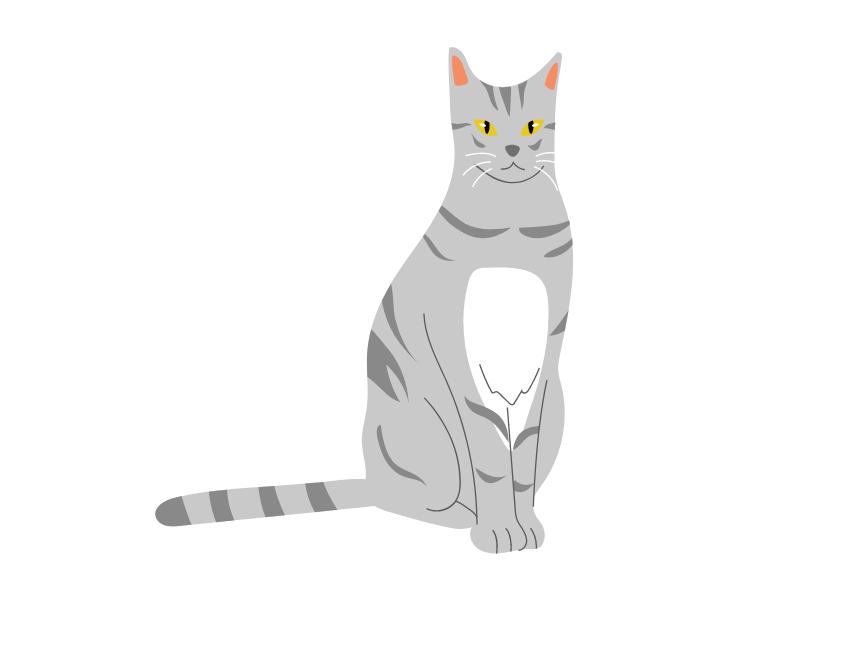
Frequently Asked Questions
What are the origins of the himalayan gene colorpoint in ragdolls?
The Himalayan gene colorpoint in Ragdolls is believed to originate from a recessive gene mutation in the 1950s. This mutation is a result of breeding between a seal-point Siamese and a domestic longhair, resulting in the unique markings of the Himalayan gene colorpoint Ragdoll.
How does the himalayan gene colorpoint affect the ragdoll’s coat color?
The Himalayan gene colorpoint in Ragdolls affects the coat color by producing a pointed pattern. This gene gives Ragdolls a darker coloration on their face, ears, legs, and tail while the rest of their body remains lighter. This contrast in colors creates a “pointed” pattern, which is the defining characteristic of the Himalayan gene in Ragdolls.
Are there any other breeds that share the himalayan gene colorpoint?
Yes, there are other breeds that share the Himalayan gene colorpoint. Siamese, Birman, and Ragamuffin cats all have the gene for the Himalayan colorpoint pattern. All these breeds have the traditional points of a Siamese, but with a creamy white body. They also have the same eye and nose colors as the Himalayan.
What is the history of the himalayan gene colorpoint in ragdolls?
The Himalayan gene colorpoint in Ragdolls has a long history. It first appeared in the breed in the 1950s, when breeders sought to create a breed with both the pointed color pattern of the Siamese, and the fluffy coat of the Persian. The Himalayan gene has been part of the Ragdoll breed since then, and they have become hugely popular, particularly in the USA.
What are some of the benefits of owning a ragdoll with the himalayan gene colorpoint?
Owning a Ragdoll with the Himalayan gene colorpoint provides a few key benefits. Firstly, you’ll get a cat that is unusually affectionate and laid-back. Secondly, the Himalayan gene dramatically increases the range of possible coat patterns and colors, offering a wide variety of options to meet your aesthetic preferences. Lastly, the gene has a low risk of health issues, making it a safe and dependable choice.



